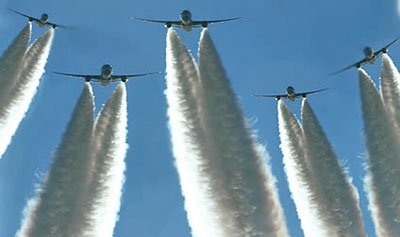|
from PreventDisease Website
The Office of the Gene Technology Regulator (OGTR) is on its way to approve a licence application from PaxVax Australia (PaxVax) for the intentional release of a GMO vaccine consisting of live bacteria into the environment in,
According to the regulator, it qualifies as a limited and controlled release under section 50A of the Gene Technology Act 2000 (the Act).
PaxVax is seeking approval to conduct the clinical trial of a genetically modified live bacterial vaccine against cholera. Once underway the trial is expected to be completed within one year, with trial sites selected from local government areas (LGAs) in Queensland, South Australia, Victoria and Western Australia.
PaxVax has proposed a number of control
measures they say will restrict the spread and persistence of the GM
vaccine and its introduced genetic material, however there is always
a possibility of these restrictions failing and infecting wildlife
and ecosystems.
Sanofi (who is one of the largest
vaccine manufacturers in the world) has subsidiary companies such as
Merial Limited who manufacture
Raboral, an oral live-virus
poisonous to humans yet distributed wildlife in the masses.
The article stated that the incidence of
human West Nile virus (WNV) cases can be significantly
reduced through large scale aerial spraying that targets adult
mosquitoes, according to research by the Yale School of Public
Health and the California Department of Public Health.
DNA vaccine enhancements specifically use Epstein-Barr viral capside's with multi human complement class II activators to neutralize antibodies.
The recombinant vaccines against WNV use Rabbit Beta-globulin or the poly (A) signal of the SV40 virus. In early studies of DNA vaccines it was found that the negative result studies would go into the category of future developmental research projects in gene therapy.
During the studies of poly (A) signaling of the SV40 for WNV vaccines, it was observed that WNV will lie dormant in individuals who were exposed to chicken pox, thus upon exposure to WNV aerial vaccines the potential for the release of chicken pox virus would cause a greater risk to having adult onset Shingles.
CALIFORNIA AERIAL SPRAYING for WNV and SV40
In February 2009 to present date, aerial spraying for the WNV occurred in major cities within the State of California.
During spraying of Anaheim, CA a Caucasian female (age 50) was exposed to heavy spraying, while doing her daily exercise of walking several miles. Heavy helicopter activity occurred for several days in this area. After spraying, she experienced light headedness, nausea, muscle aches and increased low back pain.
She was evaluated for toxicological mechanisms that were associated with pesticide exposure due to aerial spraying utilizing advanced biological monitoring testing. The test results which included protein band testing utilizing Protein Coupled Response (PCR) methods were positive for KD-45.
KD-45 is the protein band for SV-40 Simian Green Monkey virus.
Additional tests were performed for Epstein-Barr virus capside and Cytomegalovirus which are used in bioengineering for gene delivery systems through viral protein envelope and adenoviral protein envelope technology.
The individual was positive for both; indicating a highly probable exposure to a DNA vaccination delivery system through nasal inhalation.
PENTAGON
DOCUMENT REVEALED AERIAL VACCINATION PLANS
It further indicates in the abstract
that six method of virus dispersal were tested including high
altitude release, water supply release, insect transmission, and
various methods of diffusion.
by Michael Greenwood
June 2008 recovered through WayBackMachine Website
The infection rate of people within the
treated areas decreased significantly after spraying, compared to
that within areas of the county that were not treated.
The disease has appeared in all of the
lower 48 states, with varying levels of intensity.
In contrast, the surrounding untreated areas (which had a combined population of 518,566 people) had 41 documented cases prior to treatment and 35 cases after spraying was completed in the treated areas.
The researchers concluded that the risk of infection in the untreated areas was approximately six times higher than it was in the treated areas after spraying.
The Sacramento-Yolo Mosquito and Vector Control District and California health officials decided to spray the two areas amidst a growing public health crisis in 2005 that had already resulted in several deaths statewide.
Still, the decision was controversial as some people in the targeted areas were concerned about possible side effects from such a large-scale application.
Some people in the untargeted areas,
meanwhile, were upset that they were not being afforded the same
protection as residents just a few miles away. The same insecticide
is used on crops and has been approved by the U.S. Environmental
Protection Agency.
The disease generally peaks in July and
August.
|

